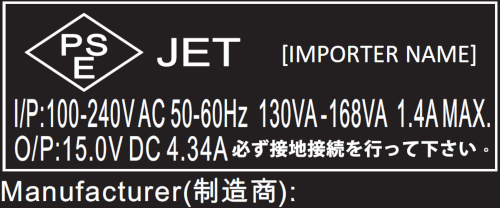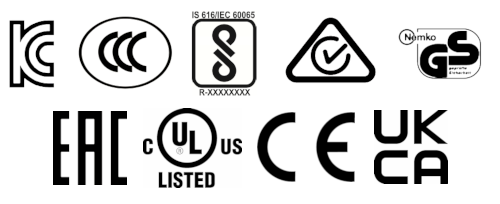Regulatory markings on power supplies; what do they mean? When do I need them?
Markings on power supplies, especially on external power supplies, contain important and very specific regulated information that is relevant for the geographical markets or application specific segments the product is designed to work in. If the details are incorrect or insufficient your goods may be refused by the end customer, importing agent or customs contesting their legality to be placed on that market or in that application.
Safety
The most critical aspect of any product is arguably safety compliance. To achieve commonality in the marketplace and to not hinder global routes to market the CB scheme was created by CENELEC. The IEC standards that the CB scheme member states adopt is a generic standard that the members deem fit for their regional requirements. For some member states “national differences” (deviations or additions) to this “backbone” are added as supplementary annexes. These are optional “expansion packs” to the standard and are not always included in the approvals for the product. These incur additional costs to obtain, and may not be necessary if that state is not the product’s end market. For example: a product has IEC60601-1, but it is wrong to assume it has the Korean national differences applied for, which are in addition to the generic IEC60601-1 approval. Please always check with the vender if the national differences you require are covered.

There are specific mechanisms and markings for some member states to ensure successful import and placing products in that market. For example PSE for Japan, where not only the JET mark needs to be applied to the label, but also the Japanese importer be named on the product in this box. This importer also must register with the METI office as the registered importer and holds a duplication certificate that is authorised with the original manufacturer of the equipment. Please see JET for more information.

India (BIS mark) and Korea (KC mark) also have a registered importer list that the products should be licenced with so that there is a local representative that has the approval documentation of the imported products.
Of the 55 CB scheme members some have their state specific safety marks include (but not limited to): “JET mark” for Japan, “KC mark” for Korea, “CCC” mark for China, “BIS” mark for India, “C-tick” RCM for Australasia, “GS mark” for Germany, “EAC mark” for Russia (if you are still interested in exporting to Russia), “cUL” mark for USA & Canada, “CE” mark for Europe and of course the UKCA mark for UK.

In some cases these marks represent not a one-time test, but ongoing inspections of the manufacturing quality process for example the UL, BIS and CCC certification also are a mark of manufacturing quality as well as product safety (however CCC can be self audited). Some marks are self declarable to accelerate routes to market including CCC, CE and UKCA marking, where the manufacturer has conducted due diligence that the product conforms to the relevant requirements for that application and or state requirements.
Other marks found on power products include Class of installation (Class II double insulated label), indoor use, keep dry, consult manual symbol (and medical device regulation version).

EMC
Some states insist that the products are also marked for electromagnetic compatibility for that region. For the US we have the FCC mark from the Federal Communications Commission for example. EMC is also implied in some “umbrella marks” such as the UKCA, CE, KC and RCM mark for Australasia.

Environmental / efficiency
Equivalent RoHS marking for some different states (inherent in the CE mark or the UKCA mark) are found for products for the Chinese market and the Taiwanese market BSMI marking. WEEE disposal regulation mark (wheelie bin) shows that the recycling costs of this electrical equipment have already been incurred by the agent that placed the unit on the European market for the equipment’s end of life recycling.

Energy efficiency markings (inherent in the RCM “C-tick”, CE marking and UKCA if the products falls under the scope for those relevant Directives or Statutory Instruments respectively if applicable to the application) can specifically feature such as the “Level VI” mark for America.

Pin Out
Below are some examples of pin outs found on power adapters. The first example is the ubiquitous barrel connector, typically showing centre positive connection, followed by the Kycon 4 pin and finally the molex min-fit found in higher power adapters.

Adapters above 240W should use shrouded connectors to protect the user which is why typically the molex mini-fit is found on power adapters in that range and above.
Please consult us when exploring new markets to ensure that the power supply conforms to the local safety, environmental and EMC requirements in those respective markets.
